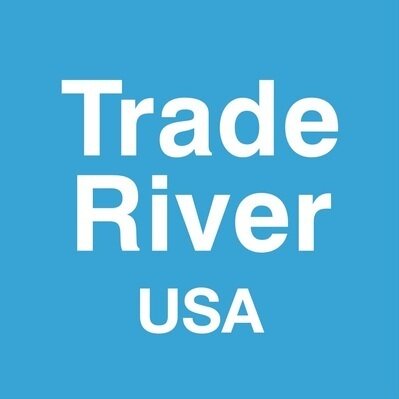LED Lighting
TradeRiver has identified the LED Lighting industry among a number of high growth industries where innovation and disruption are either happening or in desperate need of occurrence. Here’s a quick dive into all of the things we’ve highlighted about the LED Lighting industry.
Industry Insights
The global LED lighting market size is estimated at USD 30 billion. Demand for power-efficient illuminating systems for residential, commercial, and industrial sectors has increased significantly over the past several years. Growth in the industry is also propelled by rising concerns of renewable, clean energy and global regulatory policies for energy consumption.
LED lights are efficient, reliable, and have a longer life span than traditional lighting sources including indoor and outdoor solutions. Their low cost of operation and reduced heat losses also makes them replacements for incandescent lights. LED lighting is also 10x more proficient than incandescent lighting.
TradeRiver Highlights
Google searches for LED lighting spike every Holiday season like clockwork. Wholesalers like Sival and WinterGreen most likely also see this influx in their supply chain.
By the year 2030, the U.S. Department of Energy estimates that LED lighting has the potential to save 190 terawatt hours of electricity each year - which equates to $15 billion in energy costs
LED is the future technology of lighting. Companies are innovating at rapid speed to make smart lighting, smarter. Ranked first among it's competitors, GE's annual revenue is totaled at $120.2B
The LED light segment is expected to be the fastest growing segment owing to features such as minimum carbon emission and reduced power consumption. Many companies have adapted to the shifting and sustainable lighting model, including newcomers such as Green Creative. - They have an amazing backstory too! (read more here)
Over the past decade, traditionally incandescent lightbulbs have become increasingly replaced by energy efficient lighting solutions. Suppliers such as Mouser Electronics, Inc. and Bisco Industries and EGL Inc. have helped the industry transition from manufacturing incandescent lightbulbs to LED lights.
Other notable Suppliers in the industry include:
- Jen-Ter Technologies,
- Electronic Industries Inc,
- JKL Components Corp,
- Electronic Supply Chain Inc.
In American homes, energy usage has significantly decreased. This has a lot to do with the development of energy efficient lighting. More and more companies are offering a wide range of indoor and outdoor lighting solutions suitable for every application and environment. Currently, Acuity Brands is one of the leading LED lighting manufacturers in the world.
IoT is disrupting business models across all industry landscapes. As smart homes continue to grow in popularity and demand, the need for smart lighting grows in unison. Companies specializing in lighting are focusing to collaborate with the growing smart appliance market and build on their capabilities by controlling lighting through user devices and reducing energy costs. LIFX and Digital Lumens are both dominating the smart lighting industry.
As consumer needs increase, prominent issues such as climate change disable the ability to fulfill growing demands. LED horticultural lighting is disrupting the industry of lighting and innovating at a rapid pave to solve these prevailing issues. Companies such as Samsung Electronics are blazing the trail for new and optimal lighting solutions.
According to Goldman Sachs, LED lighting is one of the most commonly adopted, fastest technology shifts to be observed historically. This widespread adoption holds immense potential to cut energy costs and contribute to lowering CO2 emissions among other positive contributions to the U.S. carbon footprint.
LED lights now account for over half of U.S. light sales. Consumers are increasingly becoming aware of the capabilities of the LED light such its sustainability, durability, and cost saving features. Light companies are observing the trend and switching over to the LED bulb. In fact, GE announced its plan to end all production and manufacturing of the CFL’s.
It is forecast that lighting energy consumption in the U.S. is expected to decrease drastically within the next decade. By 2030, U.S. lighting energy consumption is estimated to reduce by nearly one-half. Acuity Brands and Cree, among other companies, have joined forces with NGLIA to continue innovating the smart lighting industry and remain on track to cut costs.
Smart city initiatives have continued to sweep the nation as LED streetlights continue to proliferate. Signify and Itron, Inc. continue to contribute to the initiative and develop new smart city efficiency solutions.
Lighting in outdoor submarkets serve multiple purposes, such as providing proper illumination for pedestrian and automotive traffic, creating a sense of personal security, and attracting attention to business and spaces. LEDs are a particularly attractive option due to the importance of durability and lifetime.
LED lighting has revolutionized traditional Christmas lighting and decorations as we know it. LED lights use up to 75 percent less energy than their incandescent counterparts in addition to saving many families money during the holiday season.
As more and more countries are getting close to phasing out conventional bulbs, LEDs are continuing their march to the top of the market. In 2020, light-emitting diodes are expected to reach a penetration into the lighting market of approximately 61 percent.
The Automotive LED Lighting Market is growing rapidly due to its cost and work efficiency. Increasing sales of lightweight vehicles, increasing LED penetration and focus on energy efficiency are contributing factors to the industry’s market growth.

















